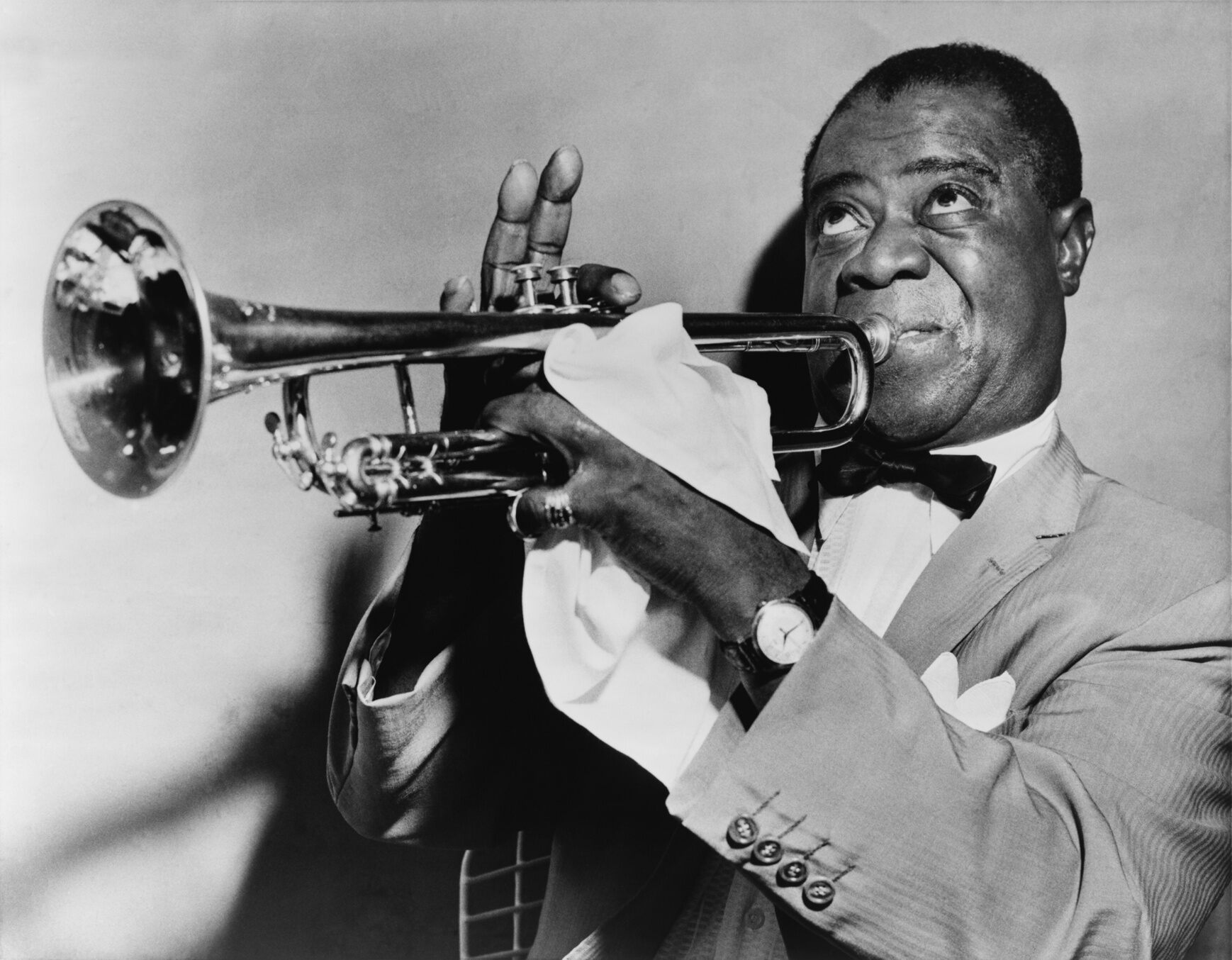Home>Genres>Jazz>Which Album Is The Highest-Selling Jazz Album Of All Time?


Jazz
Which Album Is The Highest-Selling Jazz Album Of All Time?
Modified: February 9, 2024
Discover the ultimate jazz masterpiece - the highest-selling jazz album of all time. Delve into the rich sounds and timeless melodies that make jazz a genre like no other.
(Many of the links in this article redirect to a specific reviewed product. Your purchase of these products through affiliate links helps to generate commission for AudioLover.com, at no extra cost. Learn more)
Table of Contents
- Introduction
- Criteria for determining highest-selling jazz album
- Top contenders for the highest-selling jazz album
- “Kind of Blue” by Miles Davis
- “A Love Supreme” by John Coltrane
- “Time Out” by Dave Brubeck
- “Head Hunters” by Herbie Hancock
- “Giant Steps” by John Coltrane
- “Take Five: The Best of Dave Brubeck” by Dave Brubeck
- Conclusion
- Conclusion
Introduction
Jazz, with its rich history and timeless appeal, has produced numerous iconic albums that have captivated audiences around the world. From its roots in early 20th century African-American communities to its influence on modern music, jazz has evolved and diversified, offering a wide array of styles and sounds. Among these albums, there is one burning question that often arises among jazz enthusiasts: which album holds the title for the highest-selling jazz album of all time?
Determining the highest-selling jazz album can be a challenging task, as various factors come into play. It is important to consider key criteria such as overall sales figures, critical acclaim, and cultural significance. Furthermore, the definition of what qualifies as a jazz album may vary, with some including fusion and crossover albums in the mix.
Throughout the years, several albums have emerged as top contenders for this prestigious title. Each of these albums has made a significant impact on the jazz genre and beyond, showcasing the immense talent and innovation of the artists involved.
In this article, we will explore the top contenders for the highest-selling jazz album of all time, taking a closer look at the albums and their impact on the jazz world. From timeless classics to groundbreaking experimental works, these albums have left an indelible mark on the history of jazz.
Criteria for determining highest-selling jazz album
When determining the highest-selling jazz album of all time, several important criteria come into play. It is essential to consider a combination of factors to accurately assess the success and impact of an album. Here are the key criteria used to determine the highest-selling jazz album:
- Sales figures: The most straightforward criterion is the overall sales figures of the album. This includes both physical copies sold, such as vinyl records and CDs, as well as digital downloads and streaming numbers. The album that has sold the most copies would be a strong contender for the highest-selling jazz album.
- Critical acclaim: Another important factor is the critical reception and acclaim the album has received. Positive reviews from music critics, awards, and nominations indicate the album’s quality and appeal. An album that has garnered widespread critical acclaim is likely to have higher sales and recognition.
- Cultural significance: The cultural impact and significance of an album cannot be overlooked. If an album has transcended the boundaries of the jazz genre and resonated with a wider audience, it is a strong indication of its success. Albums that have influenced other musicians and genres, become part of the cultural fabric, or stood the test of time are considered highly significant.
- Influence on the jazz genre: Jazz is a constantly evolving genre, and albums that have pushed boundaries, introduced new techniques, or paved the way for future jazz artists hold a special place in jazz history. The influence an album has had on the jazz genre and its ability to inspire and shape future generations of musicians is an important criterion in determining its success.
- Longevity: Additionally, how long an album has remained popular and relevant is a key factor. Albums that continue to sell well and maintain a strong presence in the jazz world years or even decades after their release demonstrate their enduring appeal and impact.
By considering these criteria in combination, a comprehensive assessment can be made to determine which jazz album holds the title for the highest-selling of all time. While sales figures provide an objective measure, critical acclaim, cultural significance, influence on the jazz genre, and longevity also contribute to the overall impact and success of an album.
Top contenders for the highest-selling jazz album
Several albums have emerged as top contenders for the title of the highest-selling jazz album of all time. These albums have not only achieved significant commercial success but have also made a lasting impact on the jazz genre and beyond. Let’s take a closer look at some of these top contenders:
- “Kind of Blue” by Miles Davis: Considered a masterpiece and one of the most influential jazz albums of all time, “Kind of Blue” is a frontrunner for the highest-selling jazz album. Released in 1959, the album resonated with audiences due to its innovative modal jazz approach and iconic tracks like “So What” and “All Blues.”
- “A Love Supreme” by John Coltrane: Released in 1965, this spiritual and deeply contemplative album solidified John Coltrane’s status as one of the greatest jazz musicians. Its fusion of modal and free jazz, coupled with Coltrane’s mesmerizing saxophone playing, captivated listeners worldwide.
- “Time Out” by Dave Brubeck: With its unique time signature experiments and instantly recognizable hit “Take Five,” “Time Out” became a crossover success upon its release in 1959. Its accessible yet complex compositions made it a favorite among jazz enthusiasts and casual listeners alike.
- “Head Hunters” by Herbie Hancock: Considered a groundbreaking fusion album released in 1973, “Head Hunters” pushed the boundaries of jazz by infusing it with elements of funk and rock. The album’s infectious grooves and hits like “Chameleon” helped it achieve widespread commercial success.
- “Giant Steps” by John Coltrane: Known for its complex harmonic progressions and breathtaking improvisations, “Giant Steps” by John Coltrane is a landmark album in the history of jazz. Released in 1960, it showcased Coltrane’s incredible technical prowess and marked a new era of jazz improvisation.
- “Take Five: The Best of Dave Brubeck” by Dave Brubeck: As a compilation album highlighting the best works of Dave Brubeck, “Take Five” has become one of the most recognizable and best-selling jazz albums. Its enduring popularity can be attributed to the timeless appeal of tracks like “Take Five” and “Blue Rondo à la Turk.”
These albums, each with its distinct style and artistic vision, have cemented their places in jazz history. While their commercial success is a testament to their appeal, their lasting impact on the jazz genre makes them top contenders for the title of the highest-selling jazz album of all time.
“Kind of Blue” by Miles Davis
When discussing the highest-selling jazz albums of all time, it is impossible to overlook the timeless masterpiece that is “Kind of Blue” by Miles Davis. Released in 1959, this album not only achieved significant commercial success but also redefined the boundaries of jazz and became a landmark in the genre.
“Kind of Blue” is considered a quintessential jazz recording, loved by both critics and fans alike. Its allure lies in its seamless blend of melodic simplicity and complex improvisation. The album features legendary musicians such as John Coltrane, Julian “Cannonball” Adderley, Bill Evans, Paul Chambers, and Jimmy Cobb, who collectively created a collection of tracks that have stood the test of time.
One of the notable features of “Kind of Blue” is its use of modal jazz, a departure from the traditional chord progressions and structures of the time. Miles Davis encouraged the musicians to explore improvisation based on scales or “modes” rather than pre-defined harmonies. This approach allowed for greater freedom and collaboration during performances, giving the album its distinct and revered sound.
The album opens with the iconic track “So What,” which instantly grabs the listener’s attention. The evocative melodies and solos throughout the album, such as the delicate piano work in “Blue in Green” and the mesmerizing trumpet in “Freddie Freeloader,” showcase the exceptional talent of the musicians involved. The entire album flows effortlessly, creating a sense of tranquility and introspection that resonates with listeners on a deep level.
“Kind of Blue” has achieved immense commercial success over the years, consistently ranking as one of the best-selling jazz albums worldwide. Its impact extends beyond the realm of jazz, influencing countless musicians and genres. The album’s unconventional approach to improvisation and its ability to connect with listeners on an emotional level have made it a timeless classic.
To this day, “Kind of Blue” continues to inspire and captivate audiences with its innovation and beauty. Its fusion of technical skill, artistic vision, and evocative compositions has solidified its place as an essential album in any jazz collection. Without a doubt, “Kind of Blue” deserves its spot among the top contenders for the highest-selling jazz album of all time.
“A Love Supreme” by John Coltrane
Another formidable contender for the title of the highest-selling jazz album is “A Love Supreme” by John Coltrane. Released in 1965, this iconic album not only showcases Coltrane’s virtuosity as a saxophonist but also serves as a transcendent spiritual journey that resonates deeply with listeners.
“A Love Supreme” is a deeply personal and introspective album, often considered one of the greatest jazz recordings of all time. Its four-part suite takes listeners on a transformative musical experience, as Coltrane explores themes of spirituality, devotion, and redemption. The album’s emotional intensity and Coltrane’s unmatched improvisational skills create a powerful and captivating listening experience.
At the core of “A Love Supreme” is Coltrane’s spiritual awakening and his dedication to a higher power. The album’s liner notes explicitly state Coltrane’s gratitude and faith, reinforcing the profound personal significance of the music. This deep emotional connection resonates with listeners, making “A Love Supreme” a standout album in both its artistic expression and its ability to touch the soul.
The musicality of “A Love Supreme” is nothing short of awe-inspiring. Coltrane’s powerful and impassioned saxophone playing throughout the album is masterful, pushing the boundaries of what was previously thought possible on the instrument. The interplay between Coltrane and his talented bandmates, including pianist McCoy Tyner, bassist Jimmy Garrison, and drummer Elvin Jones, creates a cohesive and dynamic sound that elevates the album to unparalleled heights.
Despite its unconventional structure and experimental nature, “A Love Supreme” achieved considerable commercial success. The album’s avant-garde style and Coltrane’s overwhelming presence as a jazz luminary attracted a wide audience, further solidifying its place as a classic in the jazz canon.
Since its release, “A Love Supreme” has continued to influence generations of musicians across various genres, transcending the boundaries of jazz. Its spiritual depth, technical brilliance, and emotional resonance have made it an enduring masterpiece that continues to captivate and inspire listeners to this day.
Without a doubt, “A Love Supreme” showcases the exceptional talent and artistic vision of John Coltrane, making it a worthy contender for the title of the highest-selling jazz album of all time.
“Time Out” by Dave Brubeck
One of the most popular and influential jazz albums of all time, “Time Out” by Dave Brubeck, is a strong contender for the title of the highest-selling jazz album. Released in 1959, this groundbreaking album defied conventions and showcased the innovative spirit of the Dave Brubeck Quartet.
“Time Out” is widely recognized for its unique and unconventional time signatures. Brubeck and his band ventured into unexplored territory, incorporating complex rhythms such as 5/4, 9/8, and 11/4. The album’s signature track, “Take Five,” written by saxophonist Paul Desmond, became an instant hit and is still one of the most recognizable jazz compositions today.
The success of “Time Out” can be attributed to its accessibility and the sheer brilliance of the musicians involved. Brubeck’s piano skills shine throughout the album, with his masterful command of rhythm and melody. Paul Desmond’s smooth and melodic saxophone playing adds a layer of enchantment to each track.
The album’s versatility is evident in the diverse range of compositions. From the playful and catchy “Blue Rondo à la Turk” to the contemplative beauty of “Strange Meadowlark,” each track offers a distinct musical experience. The use of different time signatures adds complexity and intrigue, keeping listeners engaged and enthralled.
“Time Out” broke traditional jazz boundaries, appealing to a wider audience both within and outside the jazz community. The album showcased the versatility of jazz and its ability to transcend genres. It became a commercial success, reaching a broad audience and helping to popularize jazz in the mainstream.
Decades after its release, “Time Out” continues to be regarded as a monumental achievement in jazz. It solidified Dave Brubeck’s status as a jazz innovator and established the quartet as a leading force in the genre. Its enduring popularity and timeless appeal make it a strong contender for the title of the highest-selling jazz album of all time.
The impact of “Time Out” extends far beyond its commercial success. Its influential use of irregular time signatures and its ability to blend accessibility with musical brilliance have inspired countless musicians and shaped the evolution of jazz. “Time Out” remains a beloved album that showcases the beauty and possibilities of jazz music.
“Head Hunters” by Herbie Hancock
When discussing the highest-selling jazz albums of all time, “Head Hunters” by Herbie Hancock stands out as a groundbreaking fusion album that pushed the boundaries of the jazz genre. Released in 1973, this innovative and highly influential album propelled Hancock into mainstream success and solidified his status as a jazz icon.
“Head Hunters” is a departure from traditional jazz, incorporating elements of funk, rock, and African rhythms. The album’s fusion of styles resulted in a fresh and exciting sound that appealed to a wide audience. Tracks like “Chameleon” and “Watermelon Man” are now considered some of the most iconic and memorable in jazz history.
One of the defining features of “Head Hunters” is its heavy emphasis on rhythm. Hancock and his band, which included groundbreaking bassist Paul Jackson, created infectious grooves and syncopated beats that grabbed listeners’ attention. The album’s strong rhythmic foundation combined with Hancock’s imaginative keyboard work resulted in a mesmerizing sonic experience.
“Head Hunters” achieved remarkable commercial success, becoming the best-selling jazz album of its time. Its popularity can be attributed to its accessibility and its ability to bridge the gap between jazz and popular music. The album’s crossover appeal introduced a new generation to the world of jazz, expanding its audience and visibility.
Beyond its commercial success, “Head Hunters” left an indelible mark on the jazz genre. It inspired countless musicians to embrace the fusion of different musical styles and experiment with new sounds. The album’s innovative approach to blending genres paved the way for future jazz fusion movements and had a profound impact on the evolution of jazz music.
Even today, “Head Hunters” remains a highly regarded and celebrated album. Its energetic and infectious compositions continue to captivate listeners, and its influence can be felt in various contemporary music genres. Herbie Hancock’s daring exploration and willingness to push boundaries make “Head Hunters” a deserving contender for the title of the highest-selling jazz album of all time.
“Giant Steps” by John Coltrane
Considered a monumental achievement in jazz, “Giant Steps” by John Coltrane is without a doubt one of the most influential and groundbreaking albums in the genre’s history. Released in 1960, this album showcases Coltrane’s unparalleled talent and his revolutionary approach to composition and improvisation.
“Giant Steps” is characterized by its complex and rapid chord changes, challenging even the most skilled jazz musicians. The title track itself, “Giant Steps,” mesmerizes listeners with its intricate harmonic progressions, showcasing Coltrane’s technical prowess and unparalleled ability to navigate complex musical terrain.
Coltrane assembled an exceptional lineup of musicians for this album, including pianist Tommy Flanagan and drummer Art Taylor. Their remarkable chemistry and virtuosity bring the compositions to life, creating a sense of energy and excitement throughout the album.
The album features a mixture of both original compositions and reimagined jazz standards. What sets “Giant Steps” apart is Coltrane’s unique approach to improvisation on these tunes. His inventive use of chromaticism and his ability to seamlessly weave complex melodic lines have made this album an enduring source of fascination for jazz enthusiasts and musicians alike.
“Giant Steps” not only showcased Coltrane’s remarkable talent but also marked a significant development in the history of jazz. It paved the way for the “Coltrane changes,” a harmonic concept that has since become a cornerstone in jazz improvisation. The album’s impact is felt far beyond its initial release, as countless musicians continue to study and be inspired by its innovative approach to composition and improvisation.
While “Giant Steps” may not have achieved the same commercial success as some other albums on this list, its profound influence and critical acclaim solidify its place as a top contender for the highest-selling jazz album. Its enduring legacy and the impact it had on the evolution of jazz make “Giant Steps” a true masterpiece in the genre.
“Take Five: The Best of Dave Brubeck” by Dave Brubeck
“Take Five: The Best of Dave Brubeck” is a compilation album by jazz pianist and composer Dave Brubeck that showcases some of his most beloved and iconic works. While not a studio album in the traditional sense, its exceptional popularity and enduring appeal make it a noteworthy contender for the highest-selling jazz album of all time.
Released in 1990, “Take Five” brings together some of Brubeck’s most recognizable compositions from throughout his career. The album’s title track, “Take Five,” written by Brubeck’s longtime collaborator Paul Desmond, became a worldwide sensation. Its infectious, 5/4 time signature and memorable melody made it a jazz classic and one of the best-selling jazz singles of all time.
In addition to “Take Five,” the compilation features other standout tracks like “Blue Rondo à la Turk,” “Unsquare Dance,” and “The Duke,” all of which highlight Brubeck’s innovative approach to rhythm, his skillful piano playing, and his knack for composing catchy melodies.
“Take Five: The Best of Dave Brubeck” provides a comprehensive overview of Brubeck’s diverse style and the range of his musical contributions. Known for his experimentation with time signatures, unusual harmonies, and his integration of classical music elements, Brubeck’s unique approach to jazz resonated with audiences worldwide.
The album’s commercial success can be attributed to its accessibility and the timeless appeal of Brubeck’s compositions. His ability to combine complex musical ideas with an innate sense of melody allowed his music to speak to both jazz aficionados and casual listeners alike.
“Take Five” remains a beloved album, not only for its commercial success but also for its representation of the incredible talent and artistry of Dave Brubeck. Its inclusion of some of his most iconic works serves as a testament to Brubeck’s lasting impact on the jazz genre and his contributions to its evolution.
While “Take Five: The Best of Dave Brubeck” may not have achieved the same level of commercial success as some of the other albums on this list, its enduring popularity and recognition as a definitive compilation of Brubeck’s greatest hits make it a formidable contender for the title of the highest-selling jazz album of all time.
Conclusion
In the world of jazz music, determining the highest-selling jazz album comes down to a combination of factors, including sales figures, critical acclaim, cultural significance, influence on the genre, and longevity. While it is challenging to pinpoint a single album as the definitive highest-seller, several standout albums have made a lasting impact on the jazz genre and achieved notable commercial success.
From the timeless brilliance of “Kind of Blue” by Miles Davis to the spiritual journey of “A Love Supreme” by John Coltrane, these albums have crossed boundaries and captured the hearts of listeners worldwide. Dave Brubeck’s “Time Out” and Herbie Hancock’s “Head Hunters” showcased innovation and fusion, pushing the genre in new and exciting directions. Meanwhile, John Coltrane’s “Giant Steps” displayed his extraordinary technical abilities and reshaped jazz improvisation.
Additionally, “Take Five: The Best of Dave Brubeck” compiled the exceptional works of Brubeck, offering a comprehensive collection of his iconic compositions.
Each of these albums has left an indelible mark on the jazz world, garnering critical acclaim, commercial success, and cultural significance. While sales figures are one aspect of determining the highest-selling jazz album, it is just one piece of the puzzle. The lasting impact, innovation, and influence that these albums have had on the jazz genre and beyond solidify their places as top contenders for the title.
Ultimately, the quest to identify the highest-selling jazz album is an ongoing debate that highlights the rich and diverse history of jazz. These albums, with their timeless beauty and musical genius, continue to captivate and inspire generations of listeners, showcasing the power and allure of the jazz genre.
Whether it is “Kind of Blue,” “A Love Supreme,” “Time Out,” “Head Hunters,” “Giant Steps,” or “Take Five: The Best of Dave Brubeck,” there is no doubt that these albums have contributed greatly to the world of jazz and have left an indelible mark on the hearts and minds of music lovers worldwide.
Conclusion
As we conclude our exploration of the highest-selling jazz album, it becomes evident that the answer is not a straightforward one. Determining the highest-selling jazz album requires considering various factors, including sales figures, critical reception, cultural impact, influence on the genre, and longevity.
From the timeless elegance of Miles Davis’ “Kind of Blue” to the spiritual intensity of John Coltrane’s “A Love Supreme,” jazz has produced iconic albums that have captured the hearts of audiences worldwide. Dave Brubeck’s “Time Out” brought unconventional time signatures to the mainstream, while Herbie Hancock’s “Head Hunters” fused jazz with funk and rock influences. John Coltrane’s “Giant Steps” showcased his unparalleled virtuosity, and Dave Brubeck’s “Take Five: The Best of Dave Brubeck” compiled his greatest hits.
These albums have achieved remarkable commercial success, garnered critical acclaim, and showcased the immense talent and innovation within the jazz genre. However, it is important to recognize that the highest-selling jazz album is not solely determined by sales figures. The cultural impact, perpetual influence, and enduring appeal of an album also contribute to its overall significance.
While the title of the highest-selling jazz album may remain elusive, what truly matters is the profound impact these albums have had on the world of music. They have expanded the boundaries of jazz, inspired countless musicians, and enriched the lives of listeners worldwide.
Jazz, with its rich history and diverse styles, continues to evolve and captivate audiences. It is a genre where artistic expression flourishes and where innovation knows no bounds. The albums discussed in this article represent just a fraction of the extraordinary music that jazz has to offer.
Whether it’s the melodic allure of “Kind of Blue,” the spiritual journey of “A Love Supreme,” the rhythmic experimentation of “Time Out,” the fusion revolution of “Head Hunters,” the technical mastery of “Giant Steps,” or the timeless melodies of “Take Five: The Best of Dave Brubeck,” these albums exemplify the brilliance and influence of jazz music.
In the end, the highest-selling jazz album will forever be a subject of debate. However, the beauty and enduring legacy of these albums continue to resonate with listeners, ensuring their cherished place in the history of jazz music.











